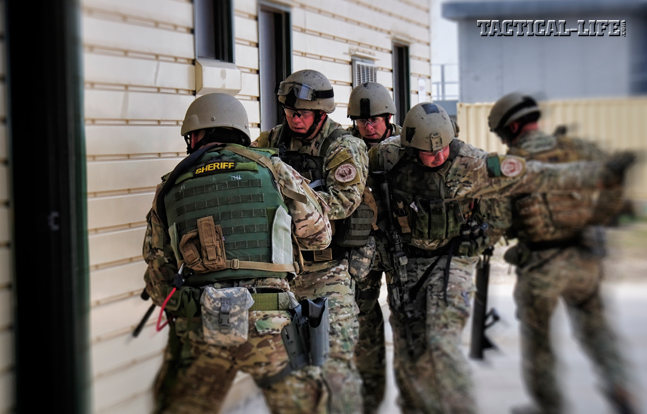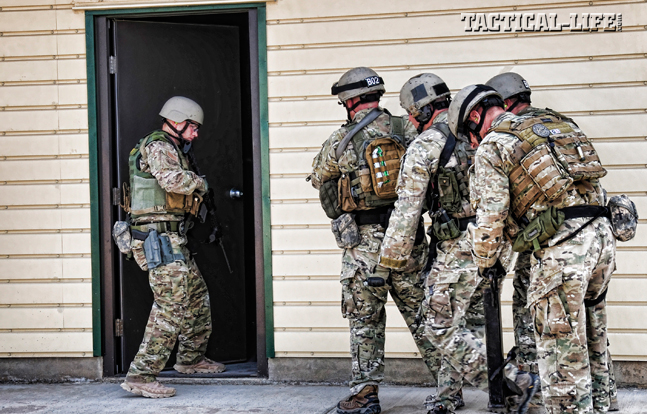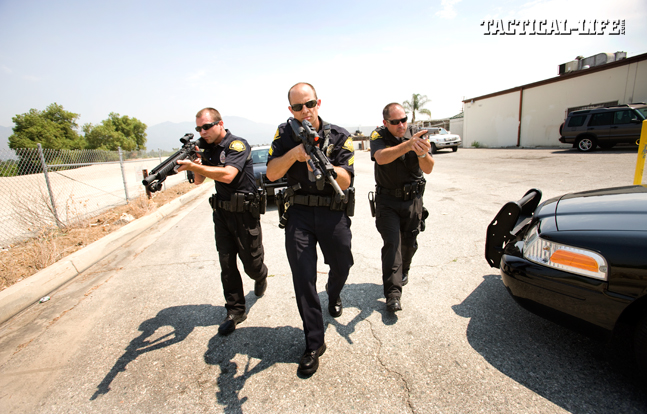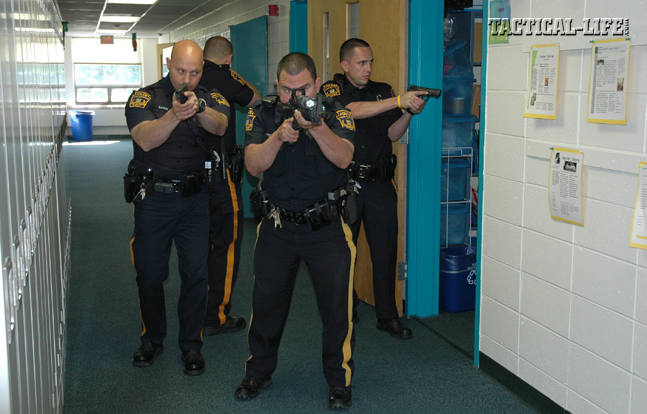In the upcoming July 2014 issue of GUNS & WEAPONS FOR LAW ENFORCEMENT, author Donald J. Mihalek details an academy designed for helping law enforcement officers combat deadly active shooters quickly and efficiently.
Mihalek writes, “In the aftermath of the Columbine High School attacks, some local officers in San Marcos, Texas, got together and decided that active-shooter-response training needed to be standardized and available to all law enforcement. Terry Nichols, a retired San Marcos officer and now the deputy director of training for the Advanced Law Enforcement Rapid Response Training (ALERRT) Center, said, ‘We felt all officers should be trained and ready to respond, and that a standard curriculum needed to be developed and taught. That was the origins of ALERRT.’ To address that need, in 2002 the active-shooter ALERRT Training Center at Texas State University was created as a partnership between the Texas State University, the San Marcos Police Depart-ment and the Hays County Sheriff’s Office. Over the last 12 years and with a little over $30 million in state and federal grant funding, the ALERRT Center has trained more than 50,000 police officers from around the nation in dynamic, force-on-force, scenario-based active-shooter training. ALERRT has become the national standard that U.S. law enforcement agencies strive for, and it’s funded by grants from the Bureau of Justice Assistance (BJA) and the Texas Governor’s Office Criminal Justice Division. The training is free to law enforcement officers and agencies. However, funding for the courses is limited.
“The ALERRT Center has developed and currently delivers seven grant-funded first-responder courses across the nation.
Advertisement — Continue Reading Below
“Basic Active Shooter Level I: This dynamic course of instruction prepares the first responder for isolating, distracting and neutralizing an active shooter. This course covers shooting and moving, threshold evaluation, concepts and principles of team movement, the setup and techniques used for room entry, approach and breaching the crisis site, rescue-team tactics, improvised explosive devices and post-engagement work priorities. The course culminates with dynamic force-on-force scenarios.”
To learn more about the courses, check out the July 2014 issue of GUNS & WEAPONS FOR LAW ENFORCEMENT, available on newsstands and digitally April 8, 2014. To subscribe, go to /guns-weapons-for-law-enforcement


























